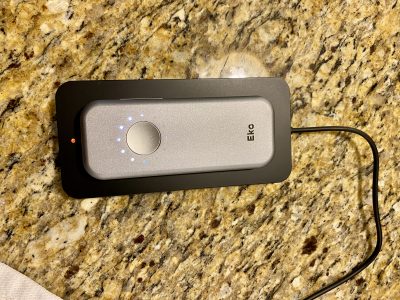Our joint has some spare change, apparently, and we’re daily going to have about 10 hours of pharmacist coverage in the ED during our peak hours. This is a trial, and we want to make it work.
Unfortunately, nobody really knows where they’ll be handiest. Should they concentrate on the nursing home admits, pointing to the (no doubt myriad) drug interactions on their multi-page MAR’s, or just troll around and look at the ED charts for what pops up? We don’t know.
I’m looking for constructive thoughts, and real-life "we tried this and found that (fill in the blank) works". (I’m also looking for amusing recommendations, but keep it clean).
Let the comments flow…



They could research what the freaking “little white pill”, the “round blue pill”, the “bp meds”, etc.. that patients say they take. They could then summarize it all in a little card for the patient that they keep in their wallet for their next visit, along with the name of their primary care doctor they can’t remember even though they have been seeing he/she for 5 years.
Or in my ED the nurses always chart “see list” for patients who come in with a list from a nursing home or from paramedics, etc.. But somehow this freaking list doesn’t make it from the copier to the chart. So maybe the pharmacist could actually find this freaking list.
I’d like to hear ideas on what the pharmacist is supposed to be doing, as I can’t come up with much. Maybe he/she could get meds out of the Pyxis so the nurses can actually spend time on patient care. I like the above idea about finding the mysterious “see list” list.
Pointing out drug interactions doesn’t have that much utility in an urgent setting – the nursing homes generally have their own pharmacists looking for them and their flags are only helpful about 10% of the time.
I would guess most docs are like me and work with a fairly tight list of medications I’m comfortable with and know well. 95% of the time I’m prescribing out of that list and don’t need any additional input. having a pharmacist around for the other 5% probably wouldn’t be cost-effective.
One comment – it’s odd you “want to make it work” but don’t have much idea what the pharmacist is supposed to be doing, it’s like implementation is coming before planning.
GoatWhacker, you’re dead-on that this is implementation before planning.
Frankly, I don’t think it’s going to last, as the pharmacist will be bored and feel useless. We’ll see.
as a pharmacist i am really not sure….we certainly are more useful on the floors, working with existing charts; but how useful is that in the emergency setting? i think working with the med sheets that come in with nursing home patients is a start, however, as they do often need some clarification, etc
We’ve had a designated pharmacist at our 70K annual volume ED for a couple of years now and think it’s a terrific idea. We see a high percentage of elderly patients and have very high acuity. She spends much of her time managing the Pixis and making sure it is being utilized efficiently and has the right meds. She’s the go-to person when we have any desire to add or subtract any meds. She sometimes stands by during codes to assist with drips and calculations especially if it’s a young critical patient. She helps expedite preparation of meds and drips when it’s too busy for the hospital pharmacist. She has an educational “Phun Pharmacy Phacts” column in our ED newsletter. She probably has more overall functions than these day to day direct interractions with the staff. It may be helpful to have the ED pharmacist have “virtual rounds” with the charge nurse to anticipate where she may be needed.
A Lee,
Does your pharmacist have written goals/job description that would be useful to pass on?
Like anything else, it will depend on your pharmacist. Med reconcilliation is the new buzzword at our place, and we sure wouldn’t mind having a pharmacist to review triage charts. Where I trained, our pharmacist was extremely helpful in the rescuss and trauma rooms.
Timely article in ACEP News about ED based pharmacist.
Vol 25 no.5 May 2006.
Apparently you are not the only one doing this.
GD, I think our pharmacist makes her own goals/job description…I’ll point her to your medblog. BTW, we also have a designated ED physical therapist, have had one for 3-4 years. Another great addition if you have some more “spare change.” Safety assessments, vertigo, knowledgeable assistance with reductions and such. Great addition.
I have a generic clinical pharmacist job description. It is not specific to the ED. A pharmacist in the ED is not really a new idea. There are quite a number of us around the country and we have a dedicated list serve to communicate with each other. I am pretty sure that there is an ED pharmacist at a Childrens Hospital in Dallas. Since you are in Texas perhaps she could be of help to you. In additon to what A Lee described, I also spend a lot of time in IBEX. I review medication history and look for issues related to chief complaint. I provide tox info and spend a lot of time answering basic drug information questions for the nurses i.e. is heparin compatible with nitro etc. I also have a lot of “behind the scenes” projects such as staff education, reviewing controlled substance logs and doing medication use evaluations. I am also coordinating a reseach study involving our physicians. I certainly don’t feel useless, and I am not bored.